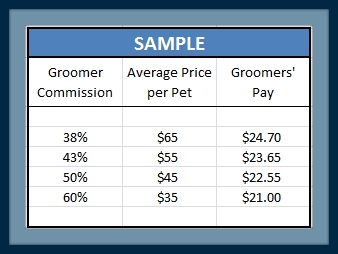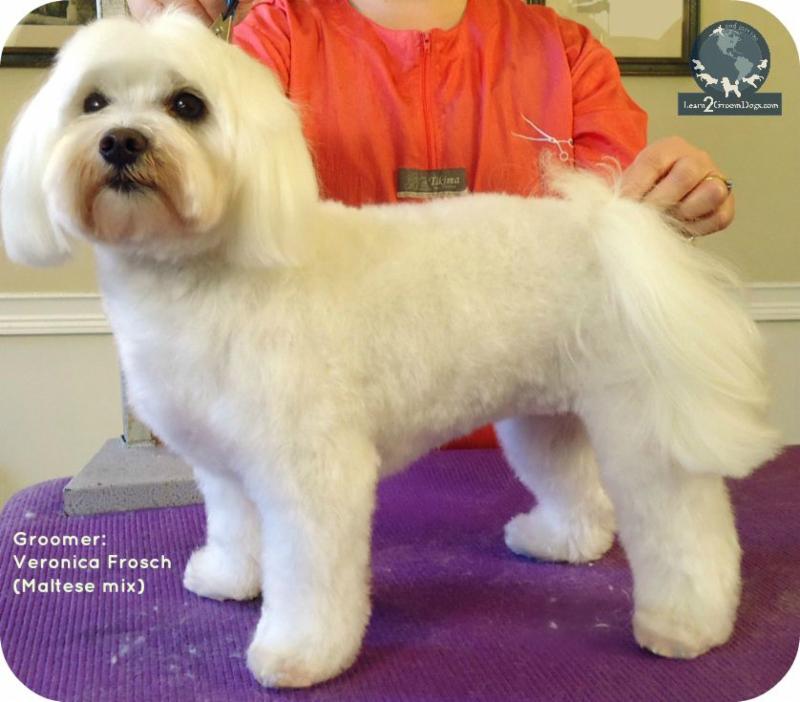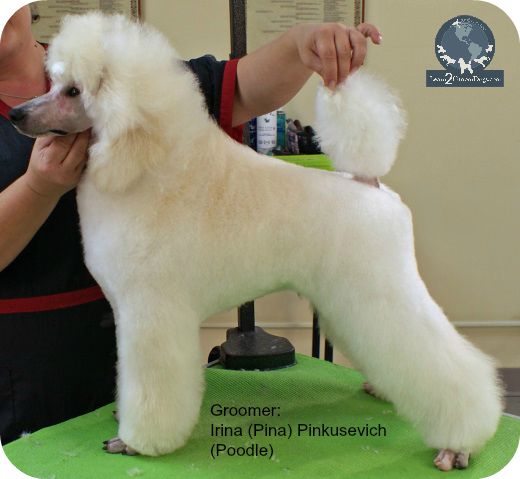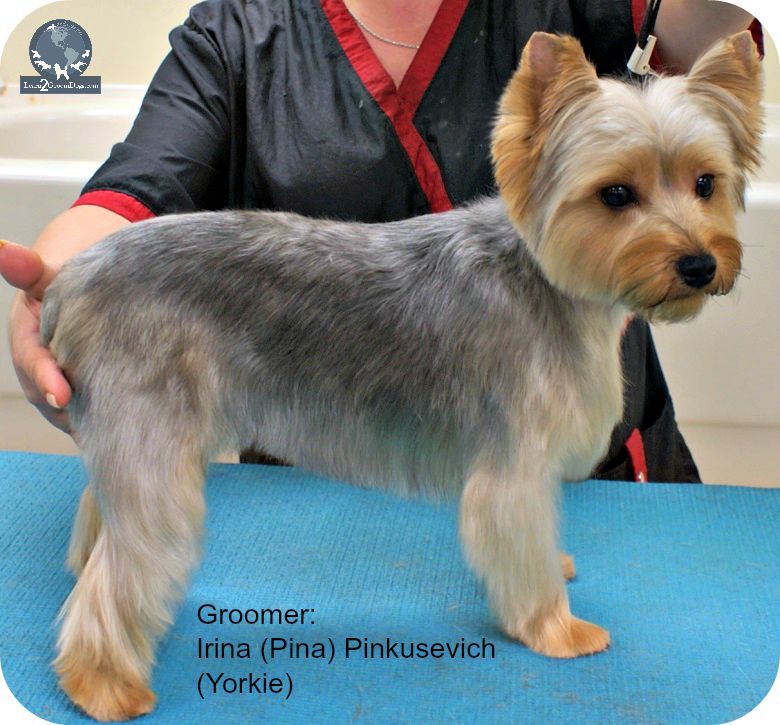Do you know your croup from your withers? In this video, master groomer Melissa Verplank discusses the vital role of canine anatomy knowledge in successful grooming. Great grooms flow from a solid understanding of the structure and kinetic capabilities of your subject.
Want to bone up on your canine anatomy? Check out Melissa’s definitive Notes from the Grooming Table at the Paragon Pet School bookstore: https://paragonpetschool.com/product/notes-from-the-grooming-table-second-edition/
Want to take a course? Explore your distance learning options at Paragon: https://paragonpetschool.com/home-study/
Melissa: Hi, guys. Melissa here, and today I want to talk to you about the importance of canine anatomy and structure. This is the root or foundation of everything we do in the pet grooming world. And it doesn’t matter whether it’s a pure bred dog or whether it is a mixed breed. There is going to be basic structure and basic anatomy that we all need to understand so that we can bring out the best features of the pet or possibly hide some features that may not be that desirable. And you know, when you’re looking at canine structure and canine anatomy, it’s kind of like as groomers, we are the architects of this groom.
Melissa: If you were building a home, and you didn’t have an architect that was formally and professionally trained, more than likely, that house isn’t going to be as sturdy and as strong as what it could be. And so when I look at dealing with dogs, the more you understand about canine structure, about canine anatomy, and also movement, you’re going to be able to do a better job in your everyday pet grooms just by having that knowledge in your head. So I really want you to think about how important it is, because if we don’t have an understanding of canine anatomy and structure, we, number one, aren’t going to be able to work efficiently, and with a harmonious relationship with that pet, because you just don’t understand how they’re put together. And if you don’t understand how they’re put together, then you know, we’ve got to move and manipulate these dogs all through the grooming process. And if you don’t understand what is comfortable for that pet or what’s going to hurt it, you’re going to constantly be at a disadvantage, and you’re not going to win the trust and cooperation of that pet.
Melissa: So understanding canine anatomy just from a working relationship with a pet is really, really critical. But then we’re going to take it another step further. If you don’t understand canine anatomy and canine structure, we’re not going to be able to communicate to one another. Nor are we going to be able to or are you going to be able to set patterns on a dog that’s going to accentuate their best features and detract from less desirable features. And so it’s really important that you’ve got a well-rounded education with canine structure and anatomy.
Melissa: And so when we first start out, what I want people to understand is to think about the dog in almost X-ray vision. I want you to be able to see the bones and how they lay in. I want you to understand that a hip is held in position by a ball and socket, and there’s only going to be certain ways that that hip can move. So that’s going to determine the range of motion when you’re moving that pet, how far you can lift that dog’s leg up to maybe get the sanitary area done. And depending on whether it’s a young dog or an older dog, they’re going to have a different range of motion. So you’ve got to be really, really aware of that.
Melissa: The shoulder is held together with muscles and tendons. But what type of lay back, how should that shoulder fall in on that dog? What’s the perfect structure for that particular dog? You know, every breed of dog was built to do … well, not every breed of dog, but most breeds of dogs had originally had a job to do. And depending on how they’re built will determine how efficient they are at doing that job, whether they are a digging type breed, like a lot of the terriers, and they’re going to ground. Or maybe it’s an arctic dog that was a sled dog originally. They’re going to have a different structure than the terrier is going to have. And that’s … the purebred dog is a man-made creature. And man developed it to help him do the job that it was originally intended for. So every dog is going to be a little bit different. And that’s where those breed standards are going to come in.
Melissa: They’re going to tell you, you know, if it was the perfect dog. How would it be built so that it can do its job? So again, the better you understand that, and it takes time to learn all of this. But when you first start grooming, the minimum I want you to understand is to be able to shut those eyes, shut your eyes and be able to see how those bones lay out so that you know how to move and how to work with that dog. And then the next thing you really need to understand is topographical anatomy. And that’s so we can communicate back and forth.
Melissa: If I say take your clippers from the withers and go to the croup, if you don’t know where the withers are, and you don’t know where the croup is, you’re going to have a hard time doing what I’m telling you to do. So that’s really, really important. Where is the elbow? Where’s the spring of grip? Where’s the upper thigh? Those are all terminologies that we’re going to use when we’re talking and giving direction about how to groom a particular dog. It’s also, you need to be able to get your hands on that dog and literally feel where those underlying bones are and how the muscles are going to play in, because the muscles are the key to setting the patterns.
Melissa: And if you don’t know where those muscles are and how they interrelate with the terminology and the bones, again, you’re going to have a really hard time making that dog be the absolute best it can be. So I want you to be able to tie everything together. From the foundation, you got to understand it, to what may be the finished picture should look like. If it was the perfect world or not, sometimes you’re looking at a matted dog, and you can’t be the sculptor of the fur. You’re not going to be setting patterns. But you still need to understand where those bones and muscles are going to play in, so you can handle that dog, and you can hold it so that it is safe and solid on the table, you’re not going to hurt it. All of those things are really, really critical. So it doesn’t really matter whether you’re doing a #7 All strip, or whether you are doing a contest-style trim, or you’re dealing with just an everyday pet in a low maintenance type trim. The better you understand canine anatomy and canine structure, the easier it’s going to be for you to get through that groom in the least amount of time possible while doing the best job possible.






 Why do you attend trade shows? How do you make sure you get your money’s worth?
Why do you attend trade shows? How do you make sure you get your money’s worth?  In my years of teaching new pet groomers, I’ve seen hundreds of dogs take advantage of a new students. Dogs pull, squirm, whine, snarl… and bite. I’ve seen many students frustrated to the point of tears.
In my years of teaching new pet groomers, I’ve seen hundreds of dogs take advantage of a new students. Dogs pull, squirm, whine, snarl… and bite. I’ve seen many students frustrated to the point of tears. Deep breathing can release stress and provide other noticeable health benefits. You will likely feel calmer after performing deep breathing exercises, and may trade feelings of anger or fear for a focused, relaxed state of mind. Most dogs will totally gravitate to this energy in a very positive way.
Deep breathing can release stress and provide other noticeable health benefits. You will likely feel calmer after performing deep breathing exercises, and may trade feelings of anger or fear for a focused, relaxed state of mind. Most dogs will totally gravitate to this energy in a very positive way.













 If you’re going to work 2000+ hours per year, don’t you want to be doing something you are passionate about? In a place you enjoy? To be respected? Treated fairly? Providing a valuable service to clients? Of course you do. That’s what we all want.
If you’re going to work 2000+ hours per year, don’t you want to be doing something you are passionate about? In a place you enjoy? To be respected? Treated fairly? Providing a valuable service to clients? Of course you do. That’s what we all want. Goals & Standards
Goals & Standards
 Don’t you love it when an owner walks into a salon and ask for this trim by name? They actually think this is a universal standard trim that all groomers and pet stylists should know how to do. When we start asking them questions, they get all huffy, thinking we don’t know how to do our jobs. Frustrating!! You and I know there isn’t a consistent right way to do a “puppy cut.” There are many – many variations!
Don’t you love it when an owner walks into a salon and ask for this trim by name? They actually think this is a universal standard trim that all groomers and pet stylists should know how to do. When we start asking them questions, they get all huffy, thinking we don’t know how to do our jobs. Frustrating!! You and I know there isn’t a consistent right way to do a “puppy cut.” There are many – many variations!
 It’s important to keep this in mind, too: one person’s interpretation of a puppy cut might be that of a smooth-coated puppy. Think Boxer, Pug, or Beagle. Another person’s interpretation would be that of a fluffier breed like a Shih Tzu, Bichon, or Poodle. There’s also a big difference between a four-week old puppy and a ten-week old puppy in terms of coat growth.
It’s important to keep this in mind, too: one person’s interpretation of a puppy cut might be that of a smooth-coated puppy. Think Boxer, Pug, or Beagle. Another person’s interpretation would be that of a fluffier breed like a Shih Tzu, Bichon, or Poodle. There’s also a big difference between a four-week old puppy and a ten-week old puppy in terms of coat growth. Here is a list of talking points when a new client request a “puppy cut.”
Here is a list of talking points when a new client request a “puppy cut.” Take charge of the conversation and win over your clients by using The Theory of Five!
Take charge of the conversation and win over your clients by using The Theory of Five! If you’ve been watching the news lately, you have probably heard about the newest illness threatening our pets. Canine influenza (CI), or dog flu, is a highly contagious infection that can have serious implications not only for our pets, but for your business and our industry.
If you’ve been watching the news lately, you have probably heard about the newest illness threatening our pets. Canine influenza (CI), or dog flu, is a highly contagious infection that can have serious implications not only for our pets, but for your business and our industry. Preventing the Flu: Step One
Preventing the Flu: Step One